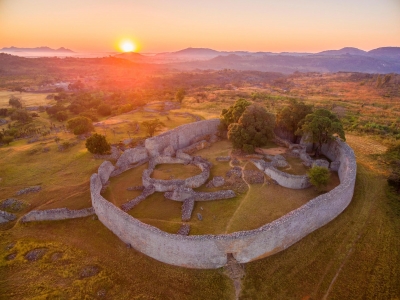
Zimbabwe, meaning ‘stone house collection of ruins of extremely ancient stone buildings. These buildings were situated at the top of a granite hill that rose some 100 meters above the wild plain north of the river Limpopo which flows between Zimbabwe and South Africa. The ruins were discovered by chance by an American hunter who had heard missionaries talk about them. The German anthropologist Carl Mauch was the first man to write about the ruins after organizing an expedition in 1871. Mauch worked on the account given to him by an African chief in a German mission.
When Mauch was abandoned by his porters was helped by the Karanga tribe and as a guest of these people he was able to explore the region. He was convinced when he saw the colossal stone buildings and listened to all the old local legends that he had found the realm of the queen of Sheba, which provided the gold for the temple of Solomon. Rumors soon spread that a great treasure lay hidden at Zimbabwe and much clandestine digging damaged the site before the authorities could act to stop it.
The majority of the objects excavated were locally made: pottery, iron tools and weapons, gold objects and carvings of human figures, birds and bowls in a local stone. A number of imported goods were also found including animals with germs to develop diseases. Sometimes various organs are removed from these laboratory animals for detailed study of their functions.
Picture Credit : Google

